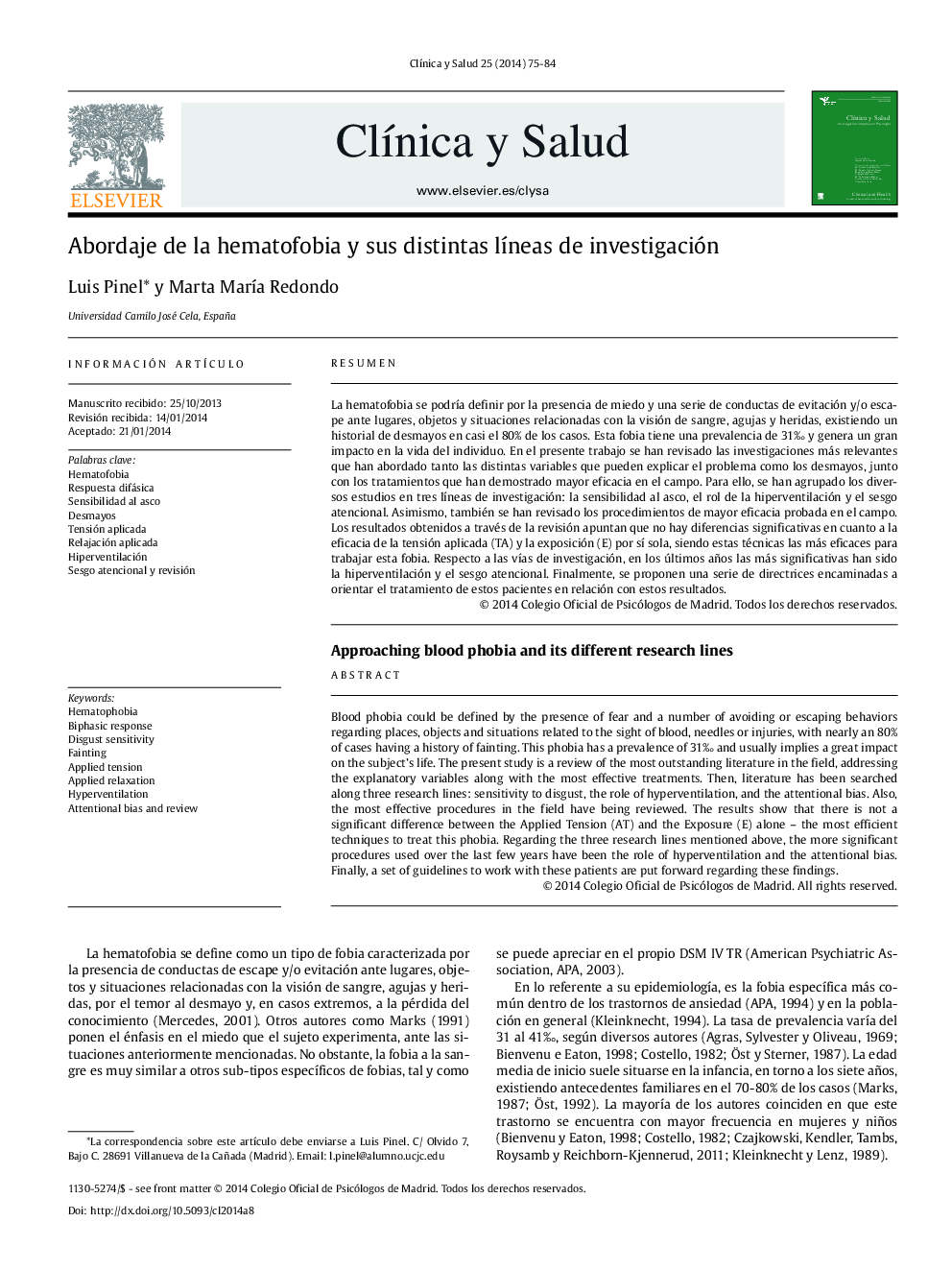| Article ID | Journal | Published Year | Pages | File Type |
|---|---|---|---|---|
| 903525 | Clínica y Salud | 2014 | 10 Pages |
ResumenLa hematofobia se podría definir por la presencia de miedo y una serie de conductas de evitación y/o escape ante lugares, objetos y situaciones relacionadas con la visión de sangre, agujas y heridas, existiendo un historial de desmayos en casi el 80% de los casos. Esta fobia tiene una prevalencia de 31‰ y genera un gran impacto en la vida del individuo. En el presente trabajo se han revisado las investigaciones más relevantes que han abordado tanto las distintas variables que pueden explicar el problema como los desmayos, junto con los tratamientos que han demostrado mayor eficacia en el campo. Para ello, se han agrupado los diversos estudios en tres líneas de investigación: la sensibilidad al asco, el rol de la hiperventilación y el sesgo atencional. Asimismo, también se han revisado los procedimientos de mayor eficacia probada en el campo. Los resultados obtenidos a través de la revisión apuntan que no hay diferencias significativas en cuanto a la eficacia de la tensión aplicada (TA) y la exposición (E) por sí sola, siendo estas técnicas las más eficaces para trabajar esta fobia. Respecto a las vías de investigación, en los últimos años las más significativas han sido la hiperventilación y el sesgo atencional. Finalmente, se proponen una serie de directrices encaminadas a orientar el tratamiento de estos pacientes en relación con estos resultados.
Blood phobia could be defined by the presence of fear and a number of avoiding or escaping behaviors regarding places, objects and situations related to the sight of blood, needles or injuries, with nearly an 80% of cases having a history of fainting. This phobia has a prevalence of 31‰ and usually implies a great impact on the subject's life. The present study is a review of the most outstanding literature in the field, addressing the explanatory variables along with the most effective treatments. Then, literature has been searched along three research lines: sensitivity to disgust, the role of hyperventilation, and the attentional bias. Also, the most effective procedures in the field have being reviewed. The results show that there is not a significant difference between the Applied Tension (AT) and the Exposure (E) alone – the most efficient techniques to treat this phobia. Regarding the three research lines mentioned above, the more significant procedures used over the last few years have been the role of hyperventilation and the attentional bias. Finally, a set of guidelines to work with these patients are put forward regarding these findings.
